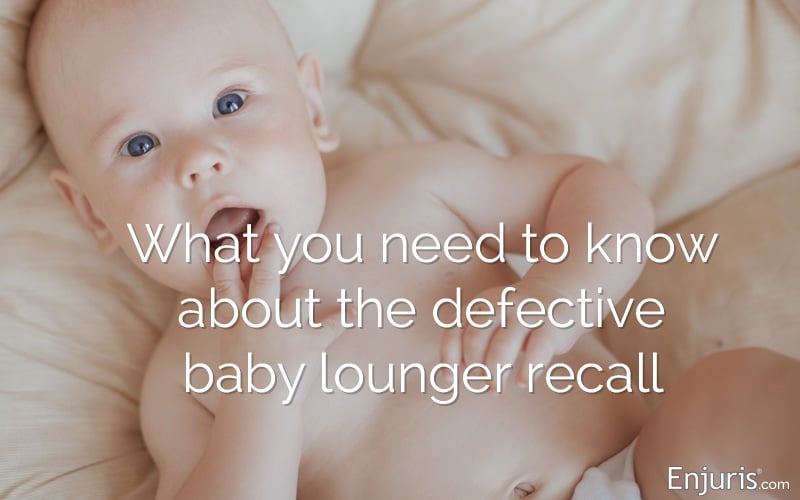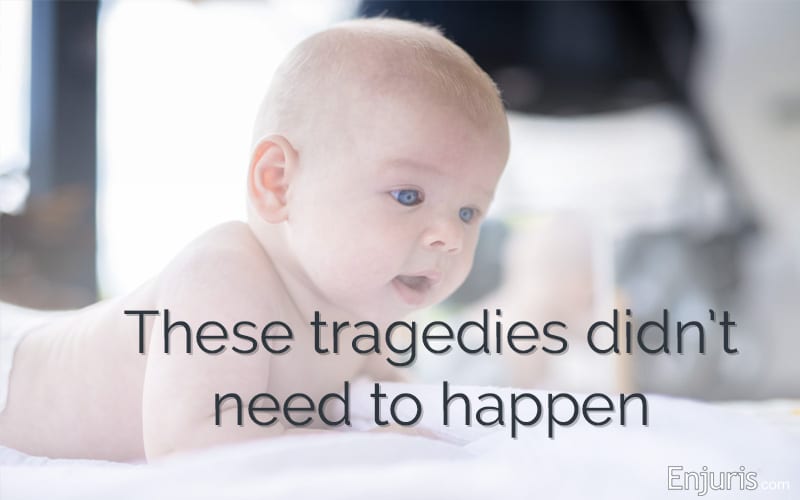The experience of being a new parent is far from universal.
Each parent/baby pair or family has a different dynamic based on the baby’s and caregivers’ personalities, temperaments, resources, and living situation.
But there is something that is about as universal as could be... every new parent wants the occasional nap. Or to have a sit-down meal. Or a shower. Or just a chance to put the baby down somewhere safe so they can have a momentary break.
That’s why products like the Boppy Newborn Lounger can feel like a lifesaver to an exhausted new parent or caregiver. It’s essentially a baby-sized cushion that is designed to be a safe spot where you can place the baby that’s not the floor, bed, or crib. It has raised edges so the baby shouldn’t be able to roll off, and it’s soft for baby’s comfort.
Sounds pretty great, right?
That’s what 3.3 million people thought when they purchased it, but now this popular product has been recalled because of 8 infant deaths associated with the item.
What happened?
These products were not intended for sleep, but babies sleep so frequently that nearly every baby product must be safe as a sleeping product. A baby can suffocate in just a few minutes and they don’t have the muscle strength or control to move their heads or faces to a safer position when they lose access to air.
In other words, if an adult becomes buried in a pillow or tangled in a cozy comforter when they’re asleep, they will reflexively move their head so they can breathe with no obstruction. A baby cannot do this.
The Boppy loungers were sold at national retailers such as Target, Walmart and Amazon. The recalled Boppy products also include a line sold through Pottery Barn Kids. They were available to consumers from January 2004 to September 2021.
In most states, third-party online marketplaces, like Amazon and eBay, are considered “service providers” and are immune from product liability lawsuits. However, a recent ruling by the Fourth District Court of Appeal in San Diego may change all of that—at least in California. Find out more
Defective product lawsuits
The area of law that includes lawsuits for a defective item is called product liability.
There are 3 types of defects that can lead to a product liability claim:
- Design defect. This happens if a product is inherently dangerous because the design wasn’t safe. Even if it’s manufactured exactly according to the design specifications, it remains a dangerous product when used correctly. The only way to correct the defect is to change the design and create the product differently.
- Manufacturing defect. If a product is damaged, not assembled properly, or otherwise comes through the manufacturing process incorrectly, it could result in a manufacturing defect.
- Inadequate warnings. Even if the product is designed and manufactured exactly as expected, sometimes injuries happen because the labels or packaging didn’t provide sufficient warning to the consumer about possible dangers or incorrect use.
The Boppy loungers could be defective either because they were poorly designed or because of inadequate warnings. However, Boppy has said that the instructions with the item specified that they were not intended for sleeping and were to be used with supervision. If lawsuits proceed against Boppy for the deaths of the 8 infants, the lawyers could argue that these instructions were not specific or inclusive enough, or that they were not clear enough on the packaging or the item, itself.
Most likely, a lawsuit in this instance could hinge on the design of the product. It could be argued that the manufacturer should have known that the cushion was too soft for a baby and it was reasonably foreseeable that if the baby turned its head just slightly, it could sink into the fabric far enough to restrict air intake through the baby’s nose and mouth.
Who can make a defective product claim?
Anyone.
That’s right. Anyone who was injured by a defective product has the right to file a claim. It doesn’t matter if you purchased the item or it was given to you. You don’t even have to be the person using the product — if you were injured because someone else was using a defective product, you’re still eligible to file a claim.
If you were injured by a product you acquired used or secondhand, you might be able to make a defect claim, depending on the product, the type of defect, and how you acquired the item.
Lawsuits for the tragic wrongful death of a child
When an adult dies in a wrongful death situation, there are financial considerations for survivors who were financially dependent on the deceased person. Often, a wrongful death lawsuit is for family members to recover costs from the person’s projected future income to cover financial losses.
However, when it’s a baby or child, there’s no way to know what the earnings would have been and no one is financially dependent on them at the time of their death.
That’s why there are 2 types of wrongful death lawsuits:
- A wrongful death action compensates the surviving family members for financial support, household contributions, and emotional distress.
- A survival action pays for the damages suffered by the victim that were the result of the defendant's negligence. The medical costs, loss of property, and pain and suffering that the deceased person suffered between the time of the accident and their time of death can be claimed through a survival action. In other words, any personal injury claim the deceased person could've made in a lawsuit if they'd lived would be part of a survival action following their death.
In a defective product wrongful death claim for a baby injured by this type of equipment, it’s most likely that parents would file a claim for their own emotional distress, loss of consortium, and similar mental anguish. It would be hard to make a claim for the baby’s emotional distress, and there likely aren't medical bills because babies can suffocate so quickly.
Defenses to a product liability claim
Each state follows 1 of 4 fault systems. No one wants to “blame” a parent for the tragic death of a baby, but there are instances when the courts could find that they share liability. Depending on what state you live in, if you’ve shared any portion of fault, it could reduce the amount of damages you receive or prevent you from receiving any damages at all.
However, most product liability cases follow the doctrine of strict liability. Strict liability claims presume that the consumer should never have received a defective product, and that the injury is therefore not their fault.
In order to have a successful strict liability claim, the plaintiff would have to prove either defective design, manufacturing defect, or marketing mistakes.
In a product liability lawsuit, this benefits the defendant if they can demonstrate that:
- The plaintiff altered or modified the product from its original form.
- The product was used contrary to included warnings or instructions.
- The plaintiff knew there was a defect but used it anyway.
- The plaintiff didn’t exercise reasonable care while using the product.
Although the Boppy loungers are recalled, it’s possible that the company could claim that parents did not use them according to specifications or instructions, or that they somehow modified them from how they were intended to be used.
Do you need a product liability lawyer?
If you own a Boppy lounger but your baby wasn’t injured, then you probably don’t need a defective product lawyer. Instead, you can follow the instructions provided by the Boppy company to receive a refund for the recalled item.
If, however, your baby was injured because of the Boppy lounger (or if you or your child was injured by any defective product), you should absolutely contact a product liability attorney right away.
Your lawyer will examine the product, review any evidence around the circumstances of your injury, and guide you through the process of filing a lawsuit if it becomes necessary.
Nursing Pillows Found Responsible for Infants’ Deaths
Defective baby and children’s products are everywhere, even with the simplest, most basic items. Can you sue if your child was injured?



